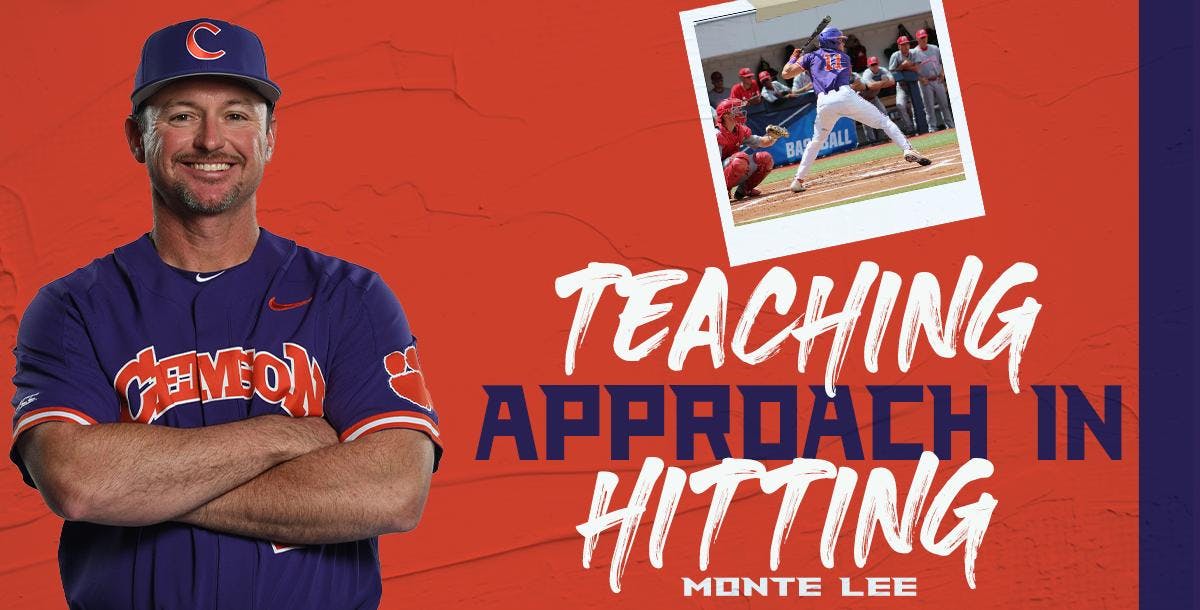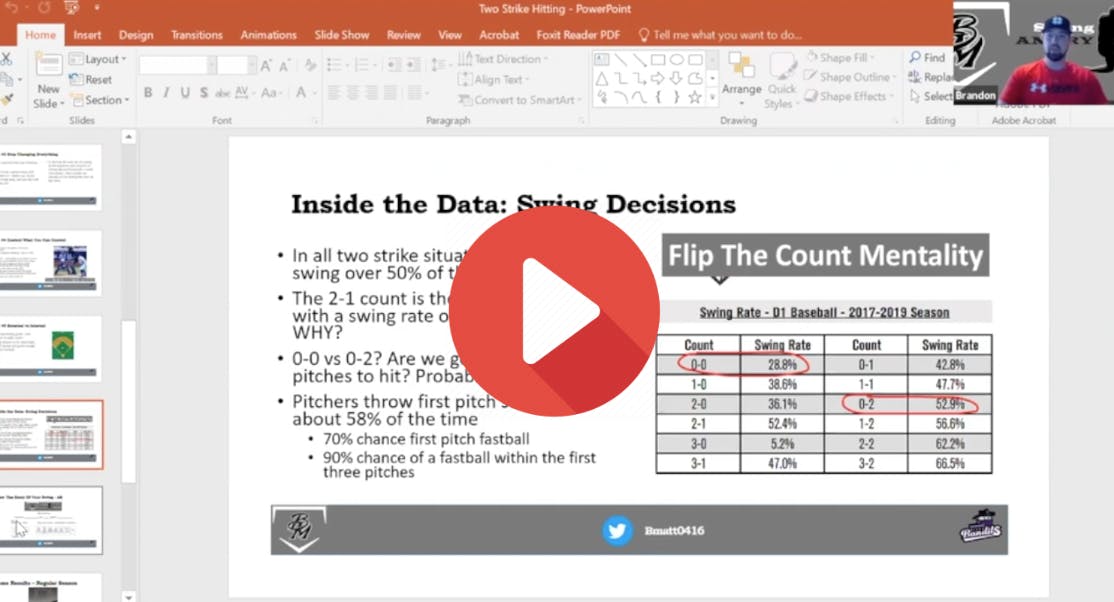Featured courses
- Understanding The Shift by Brandon Ogle
- Two Drills to Improve Outfield Movement and Communication by Grant Young
- The Ultimate Resource For Coaching Youth Baseball by Jackson Chlebowy
- Become a Master at Bunting by Brandon Ogle
- 5 Reasons Why There Is More To Good Base Running Than Just Speed by Brandon Ogle
- Three Injury-Prevention Tips For Your Offseason Pitching Program by Grant Young
- How to Teach Hitting to the Next Generation by Grant Young
- Developing Defensive-Minded Baseball Catchers by Grant Young
- 3 Baserunning Tips to Score More Runs in Baseball by Grant Young
- 5 Outfield Drills to Work on in Season by Alec Burris
- Keys For Scoring More With Runners on First and Third Base by Grant Young
- How to Develop Your Game to Become a Five-Tool Player by Brandon Ogle
- 3 Coaches Share the Keys to Running Baseball Practice the Right Way by Grant Young
- Four Drills to Sharpen a Baseball Hitter’s Vision at the Plate by Grant Young
- Four Quotes to Hit Better With Two-Strikes by Grant Young
- Four of Former MLB Pitcher Juan Nieves’ Movement-Based Pitching Drills by Grant Young
- Two Tips For Developing an Elite Baseball Bullpen by Grant Young
- Overcoming the Four Challenges of Indoor Baseball Practices Because of Weather by Grant Young
- Three Tips to Make Your Baseball Team Mentally Tougher by Grant Young
- Three Priceless Philosophies to Motivate Your Baseball Team by Grant Young
- Three Offseason Baseball Drills to Simulate Competition by Grant Young
- Three Baseball Offseason Strength and Conditioning Essentials by Grant Young
- Important Ways to Improve Your Baseball Team’s Baserunning by Grant Young
- Three Ways to Perfect Hitting Mechanics From an MLB Icon by Grant Young
- Catchers can influence pitchers...for bad or good by Drew Johnson
- Throwing Strikes and Playing Good Defense Equals Wins by Jose Ortiz
- Legendary Indiana Head Baseball Coach Bob Morgan’s Offensive Theory by Grant Young
- Tennessee Head Baseball Coach Tony Vitello on How to Practice Baserunning by Grant Young
- Three Great T-Ball Drills For Youth Baseball Players by Grant Young
- How to Manage a Baseball Pitching Staff by Grant Young
- Three Uncommon Tips to Become a Better Hitter by Grant Young
- How a Baseball Coach Can Develop Strike Throwers by Grant Young
- Drills to Develop Elite Baseball Outfielders by Grant Young
- Baseball Training Exercises to Strengthen Arm and Bat Speed by Grant Young
- How to Use Bunting to Score More Runs by Grant Young
- How To Build An Elite Baseball Infielder by Grant Young
- Three Drills to Improve Your Baseball Team's Infield Play by Grant Young
- Three Keys to Curating a Pitching Staff’s Success by Grant Young
- 3 Techniques to Develop a Baseball Player’s Hitting Approach by Grant Young
- How to Cultivate Confidence Within Your Pitchers by Grant Young
- 5 Every Day Drills To Help You Become A Better Catcher by tyler Linderman
- How to Throw A Curveball by Brandon Ogle
- How to Assemble a Lock-Down Bullpen by Brandon Ogle
- How to Throw a Sinker by Brandon Ogle
- How to be a Smart Baserunner by Brandon Ogle
- Improving a player's slugging average by Phillip Woolgar
- The 8 Fundamentals of Pitching by Drew Johnson
- How to Throw a Deceiving Changeup by Brandon Ogle
- Step Up Your Outfield Defense With These Three Drills by Jose Ortiz
- 8 Baseball Drills Every Player Should Practice by Drew Johnson
- How To Become An Elite Defensive Outfielder by Tyler Linderman
- 5 Tips For Crushing A Curveball by Johnny Grassi
- LEGENDS FOR YOUTH INCLUSION BASEBALL CLINIC by Phil
- Fourteen Ways To Turn A .300 Hitter Into A .210 Hitter by Jay P. Granat, Ph.D.
- How To Become The Ideal Leadoff Man by Brandon Ogle

3 Techniques to Develop a Baseball Player’s Hitting Approach
- By Grant Young
A baseball player can have the quickest hands, keenest eyes, and most perfect mechanics in their league. But if they never develop a proper hitting approach while at the plate, they’ll never reach their true ceiling.at the plate, they’ll never reach their true ceiling.
On the surface, developing an effective hitting approach can sound simple. Yet, we all know that baseball — hitting, specifically — is a game of failure. And if a player is going to adjust their hitting approach after every time they get out, or even after every hitless game they have, they’ll never reach their true potential.
Thankfully, there are hitting coaches who are generous enough to share their wealth of wisdom and create courses that can teach you exactly how to develop a consistent hitting approach for your players.
Brandon Matthews - 2 Strike Hitting: Approach, Philosophy, & Strategyke-hitting-approach-philosophy-strategy/control-what-you-can-control/11811851"> 2 Strike Hitting: Approach, Philosophy, & Strategy
Brandon Matthews is a professional hitting instructor in North Carolina. Coach Matthews has almost 20 years of coaching experience at all levels from youth to professional baseball. In 2017, Coach Matthews started Swing Angry LLC for baseball and softball hitting instruction. Since then, he has performed thousands of lessons with youth to professional hitters.
In his course, Coach Matthews explains that developing a praiseworthy hitting approach is all about developing one’s mental fortitude.
“I think a lot of hitters don’t have success when they get to two strikes because they’re too worried about striking out,” he says. “They’re more focused on what they don’t want to happen, than they are focused on what they want to happen.”
In other words, many hitters have negative thinking habits at the plate that keep impacting their psyche. Coach Matthews believes the remedy to this is for coaches to help instill confidence and relaxation in their players when they reach two strikes. If their coach remains at ease, and not worried about a potential negative outcome, then it will become easier for the hitter to focus on the positive, as well.
Another important aspect of Coach Matthews’ lesson is to control what we can control. A pitcher making the perfect pitch, an umpire making a bad call, or squaring a ball up only for it to go straight at a fielder is out of the hitter’s control — and are therefore things that they should not worry about.
Hitting is difficult enough as is. So why waste time and mental energy thinking about what we won’t be able to change? According to Coach Matthews, these are the keys to developing a solid hitting approach.
Monte Lee - Developing Approach in Hittingcourse/baseball/teaching-approach-in-hitting/11926665"> Developing Approach in Hitting
In 2022, Monte Lee was named the associate head coach/recruiting coordinator for the South Carolina baseball team. Prior to Coach Lee joining the Gamecocks baseball program, he was the the head coach at Clemson University for seven seasons (2016-22), garnering a 242-136 overall record and leading the Tigers to four NCAA Tournament berths. Lee coached nine All-Americans, including at least one All-American in six of his seven seasons, and had 34 players drafted a total of 38 times at Clemson.
During his course, Coach Lee was asked about whether he advises his player to sit on pitches.
“It depends on what the pitcher is trying to do to us,” Coach Lee responded. He then discusses a situation where an opposing pitcher has an above-average breaking ball, but seldom throws it for strikes. In a situation like that, Coach Lee tells his hooters to avoid pitches that look like they’re headed low and away, because that pitch will likely end up outside of the strike zone.
The point here is that Coach Lee is preparing with his hitters beforehand on how to handle their in-game hitting approach. There is a constant stream of scouting and communication between coaches and players (and between players and players) about what specific pitchers are trying to do in certain situations.
Coach Lee alludes to how doing your homework beforehand and communicating feedback to your players is a great way to have them focus on the important things while they’re at the plate, and not playing a guessing game. And even if the hitter is still guessing about what’s coming, they’ll at least feel more confident at the plate as opposed to having no idea what’s headed their way.
Of course, coaches in youth baseball might not have access to opposing pitcher scouting reports. In this case, watching a pitcher make their warm up pitches and seeing what they throw should suffice in communicating an approach to hitters.
Steve Springer - Mental Side Approach to Hittingourse_lesson/mental-side-approach-to-hitting/the-power-of-breathing/604456"> Mental Side Approach to Hitting

Steve Springer is the former performance coach & major league scout for the Toronto Blue Jays. Coach Springer played over 14 years as a professional baseball player and compiled over 1,600 professional hits. He now travels and speaks across the country about the mental side of hitting while working and training with major league all-stars. Coach Springer is the author of Quality At-Bats and the founder of Quality At-Bats Academy.
While constructing an effective hitting approach is in large part mental, there are crucial physical components to doing so, too. Coach Springer says that breathing might be the most important.
Coach Springer says that breathing at the plate is about getting one’s energy up in the chest, and then “dancing with the pitcher”; that is, timing one’s breathing them the pitcher’s windup. And that doesn’t mean taking short, choppy breaths in order to synchronize. Rather, Coach Springer suggests taking long, measured breaths that will enable a hitter to think clearly and execute their approach while at the plate, without getting overzealous.
Breathing is paramount to surviving in all facets of life. So why should hitting be any different?
Taking these tips from three elite hitting courses should help you hone your hitters’ approaches, in both a physical and mental capacity. Hopefully these notes will have your hitters thinking (and breathing) like a pro next time they approach the plate.



